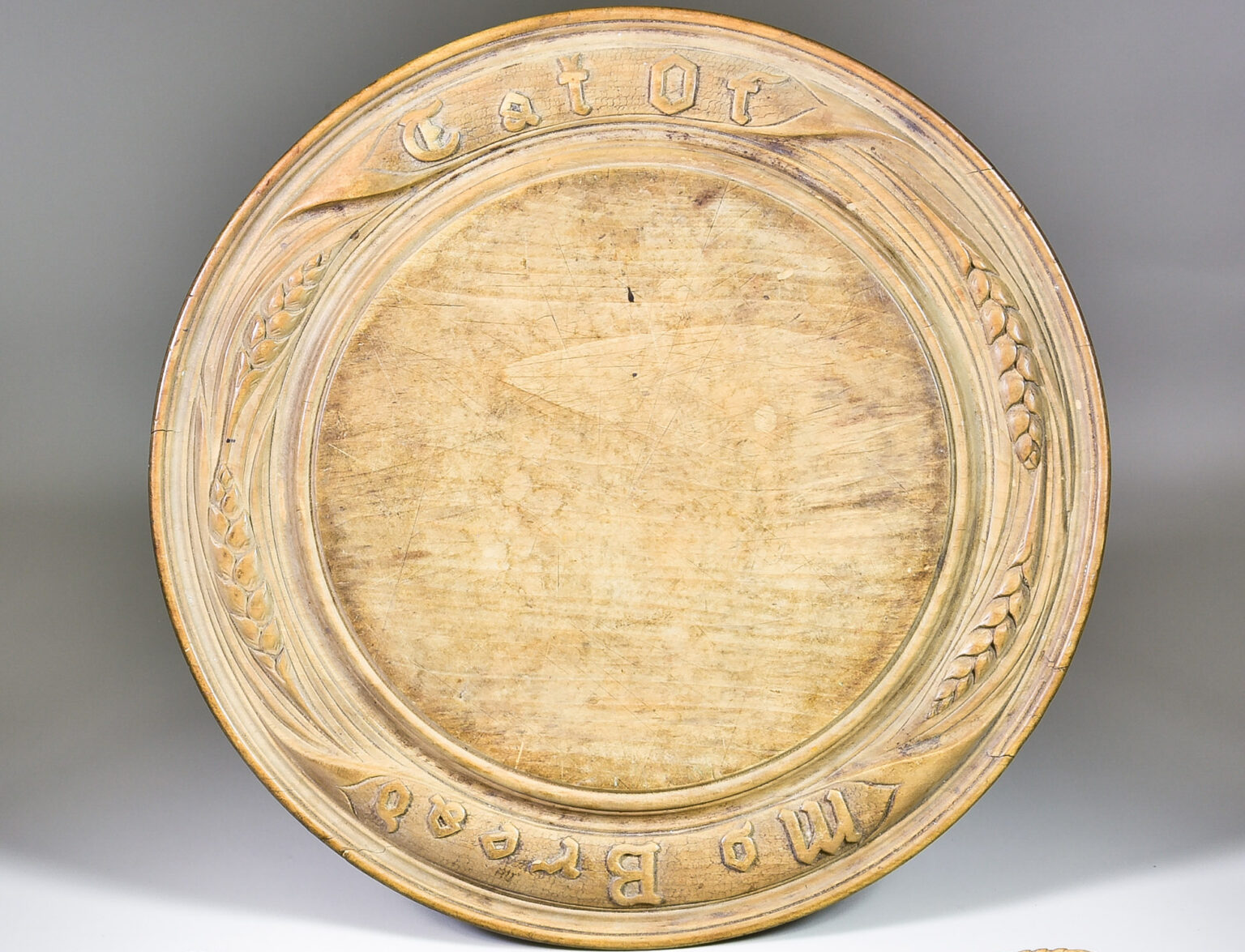Britain’s biggest collection of breadboards is being sliced up after going on sale.
The beautifully-carved wooden boards were amassed over decades by Rosslyn Neave.
She amassed over 600 of them over a 40-year period.
READ MORE: Desperate mum reunited with lost wedding rings found at rubbish tip
The collection became the Antique Breadboard Museum, based in the front room of her house in Putney, south London.
Following her death, some of the museum’s rare exhibits and her personal collection of favourites are being sold.
The Neave Collection features boards, some with matching breadknives, dating from the 1700s through the Victorian era and up to the 20th century.
It includes some 16th and 17th-century trenchers – medieval plates, often with indents for salt or to collect juices.
They are very rare, as many were burned or thrown away once they split.
One square trencher has an estimated cost of £3,000.
The collection mainly features circular boards made of a join-free piece of lightweight sycamore chosen for its tight grain.
Sycamore also doesn’t transfer a sap flavour to food.
Oak, beech and other woods were used too, as reported by What’s The Jam.
Bread was cut on plain, unremarkable wooden boards until the early Victorian period, when everything changed with the introduction of the Corn Laws in 1815, which put tariffs on foreign wheat.
Consequently, bread prices went through the roof, and only the wealthy classes could afford it.
To show off when they served bread, the aristocracy commissioned carvers to decorate boards with family mottos and heraldry.
The middle classes copied them, and soon the carved breadboards, complete with matching bowls and butter dishes, became a mark of gentility.
They were often given as a gift or used like a greeting card.
In the 1840s, William Gibbs Rogers of London carved boards for the
nobility, adding to his more famous work, which included carving a cradle for Queen Victoria.
But carvers rarely signed their work as they were not seen as ‘art
In the 1860s, George Wing of Sheffield simplified the carving and made the boards more commercial.
He was bought out by the Bramhall company, which, in its heyday in the 1920s, was using 700 trees a year, sending 4,000 wood items a week around the British Empire.
Wheat and floral borders were popular, as were pilgrimage boards. Late Victorian breadboards often featured worthy or religious mottos such as ‘Don’t eat too much’, ‘Be thankful’, or the finger-wagging ‘Waste Not Want Not’.
When the Corn Laws were repealed in 1846, bread became affordable again, and enterprising carvers began churning out cheaper breadboards for the masses.
But in the 20th century, when mass-produced loaves became bigger and rectangular traditional boards fell out of favour.
The sale is being handled by Canterbury Auction Galleries.
Part of the collection was auctioned at the start of October, with further lots being put up in future sales.
READ MORE: Keir Starmer £30 Toby Jugs have sold out
